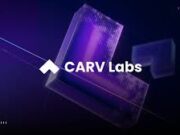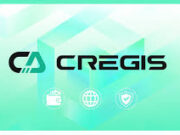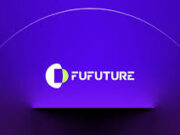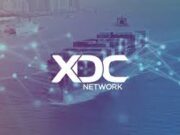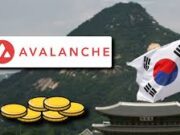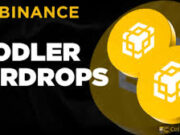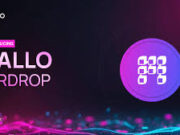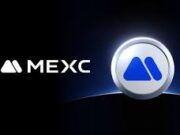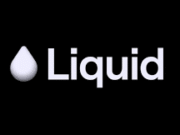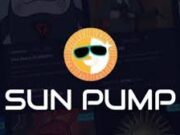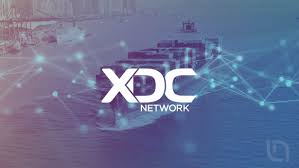The world of finance is evolving faster than ever. As digital assets mature, traditional and decentralized finance come together — not as separate silos, but as converging roads to build a new, more efficient system. In that spirit, the XDC Network, an enterprise-grade Layer-1 blockchain, has taken a major step: it has become a member of AIMA (Alternative Investment Management Association), the world’s largest alternative investment management association.
This isn’t just a name-on-a-letterhead moment. XDC’s membership in AIMA unlocks new opportunities for collaboration between legacy asset managers and digital-native firms, building bridges that can reshape how real-world assets (RWAs) are tokenized, distributed, and managed. Let’s dig into what this means, how it could play out, and where it might lead.
Understanding the Players: AIMA and XDC Network
What Is AIMA?
AIMA is a heavyweight in the alternative investment industry. It represents over 2,000 corporate members in more than 60 countries, covering hedge funds, private credit, and other alternative investment vehicles. (AIMA)
Within AIMA, the Digital Assets Working Group (DAWG) plays a critical role. This group brings together senior industry professionals — fund managers, allocators, service providers — to build operational standards, offer regulatory guidance, and push thought leadership in the digital asset space. (AIMA)
DAWG’s responsibilities include regulatory engagement, educational programmes, and the development of best practices for digital-asset funds.
What Is the XDC Network?
XDC Network is a Layer-1 blockchain designed for real-world asset tokenization, trade finance, and institutional use cases. (CoinDesk) It runs on a delegated Proof-of-Stake (dPoS) consensus mechanism, which provides fast transaction finality — measured in seconds — and very low gas fees. (Business Wire)
One of the defining features of XDC is its work in real-world asset (RWA) tokenization. For instance, XDC Network and Archax, a UK FCA-regulated digital securities exchange, launched tokenized versions of major money market funds (MMFs) from established asset managers like BlackRock, State Street, Fidelity, and abrdn. (Business Wire)
The Significance of the XDC–AIMA Union
Building Bridges Between TradFi and DeFi
By joining AIMA, XDC is entering a serious institutional playground. This membership gives XDC a seat at the table with traditional asset managers, allocators, and service providers who are actively thinking about digital assets.
- Collaboration: AIMA’s network provides a structured pathway for XDC to work directly with fund managers and institutional allocators who otherwise may have limited exposure to blockchain-native infrastructure.
- Policy Influence: Through AIMA’s DAWG, XDC can contribute to regulatory discussions, helping shape guidelines around tokenization, fund structuring, and blockchain-native asset classes.
- Education: XDC can be part of educational initiatives to demystify tokenized funds, especially real-world asset products, for traditional finance professionals.
Real-World Asset Tokenization
The tokenization of RWAs is not just a buzzword. It’s increasingly seen as a powerful way to bring traditional finance on chain, improving liquidity, efficiency, and access.
XDC has already shown what’s possible. Its partnership with Archax led to four major money market funds being tokenized on its blockchain. (Business Wire) These are not speculative assets — these are regulated, institutional-grade funds from some of the largest names in finance.
By leveraging AIMA’s network, XDC can scale these kinds of initiatives, make real connections with asset managers, and accelerate adoption of tokenized fund frameworks.
Strengthening Compliance and Institutional Readiness
Institutional adoption of blockchain requires more than speed and scalability — it needs compliance, risk management, and regulatory clarity.
XDC is no stranger to this. Earlier in 2025, it integrated Elliptic, a leader in blockchain compliance and AML analytics, enabling institutions on XDC to access forensic tools, wallet-risk scoring, and transaction monitoring. (Genfinity – Web3 Education & News)
By working within AIMA’s framework, XDC gains additional legitimacy. It can engage with AIMA’s regulatory thought leadership, leverage its best practices, and build infrastructure aligned with institutional standards.
Potential Paths Forward: Collaboration Scenarios
Now that XDC is a member of AIMA, how might this collaboration play out in practice? Here are some likely scenarios, among several possibilities:
- Tokenised Fund Launches
- With access to AIMA’s institutional players, XDC could help more traditional money managers issue tokenized fund products. These could include MMFs, credit funds, private equity vehicles, or real estate-backed funds.
- AIMA could serve as a bridge for onboarding these managers, validating compliance, and providing operational guidance.
- Shared Operational Frameworks
- Through AIMA’s DAWG, XDC can contribute to and benefit from shared standards for digital-asset fund operations — from onboarding to custody, redemption, and reporting.
- This could include due diligence questionnaires (DDQs) tailored for tokenized funds and risk frameworks.
- Regulatory Engagement & Advocacy
- XDC and AIMA can jointly advocate for regulatory clarity in key markets. AIMA’s global footprint and industry credibility amplify XDC’s voice in regulatory forums.
- They can tackle issues such as tax treatment, securities regulation, and token classification.
- Education & Thought Leadership
- Hosting workshops, webinars, or seminars under AIMA’s banner to educate institutional managers on the benefits and mechanics of tokenization.
- Producing research reports on RWA tokenization, liquidity, settlement, and the business models enabled by blockchain.
- Next-Gen Asset Management Models
- Exploring more sophisticated, decentralized or hybrid investment models — for example, decentralized multi-manager funds implemented on-chain. (On that note, a recent academic framework proposes an on-chain, multi-strategy fund architecture, where vaults allocate capital dynamically based on strategy performance. (arXiv))
- Combining AI, tokenization, and institutional rails to create more efficient, transparent, automated investment products.
Looking Ahead: What This Could Mean for the Industry
A More Fluid Capital Market
With tokenization platforms like XDC working hand-in-hand with AIMA’s network, we might see a shift in how capital flows. Instead of clunky, paper-based processes, institutions could move funds on-chain quickly, automatically, and with lower costs — without sacrificing regulatory rigor.
Democratization of Asset Classes
Tokenized funds lower traditional barriers to entry. By creating digital versions of real-world funds, XDC could help open up asset classes that were previously accessible only to large institutions. For example, smaller investors or emerging managers could get exposure in a more efficient, transparent way.
Innovation in Fund Structuring
Joining AIMA could catalyze more creative fund structures: hybrid funds, delegated on-chain strategies, automated asset allocation, and even AI-driven portfolio management. Through AIMA’s forums, these models can be stress-tested and validated.
Responsible Growth
XDC’s commitment to compliance (e.g., its Elliptic integration) plus AIMA’s regulatory focus provides a strong foundation for responsible adoption. This could help digital assets mature in a way that earns trust from traditional finance participants, regulators, and investors.
Challenges to Navigate
Of course, this journey will not be without obstacles:
- Regulatory complexity: Different jurisdictions have varying rules for digital assets, tokenization, and fund distribution. Navigating these globally is difficult.
- Operational friction: Even with gamified on-chain fund models, real-world onboarding, compliance, and redemption processes need careful design.
- Education gap: Many traditional managers are still unfamiliar with tokenization mechanics, smart contracts, or on-chain settlement.
- Liquidity concerns: For tokenized funds to work at scale, there needs to be enough secondary-market demand and infrastructure.
- Risk and security: Although dPoS networks like XDC are optimized for speed, security risk remains in smart contracts, custody, and counterparty integrations.
But because XDC is aligned with AIMA — and because AIMA has real influence in regulatory and institutional circles — these challenges are far from insurmountable.
Practical Wrap-Up:
XDC Network’s membership in AIMA represents a meaningful inflection point. It signals that blockchain-native infrastructure is no longer just a fringe innovation — it’s being woven into the fabric of institutional finance.
By plugging into AIMA’s broad and well-established network of asset managers, allocators, and service providers, XDC gains legitimacy, opens up new collaboration channels, and can scale its real-world asset tokenization mission more swiftly.
For the alternative investment industry, this could mark the beginning of a new chapter: where tokenized funds, hybrid investment models, and on-chain settlement are not experiments but core parts of how capital is raised, deployed, and managed.
Sources:
- XDC Network’s money market fund token launch with Archax: (Business Wire)
- Partnership between XDC and Archax: (Business Wire)
- Overview of AIMA’s Digital Assets Working Group:
- AIMA’s digital assets key topics page: (AIMA)
- XDC Network integration with Elliptic: (Genfinity – Web3 Education & News)
- XDC’s core blockchain architecture and real-world asset focus: (CoinDesk)
- Academic framework for decentralized multi-manager fund: (arXiv)


